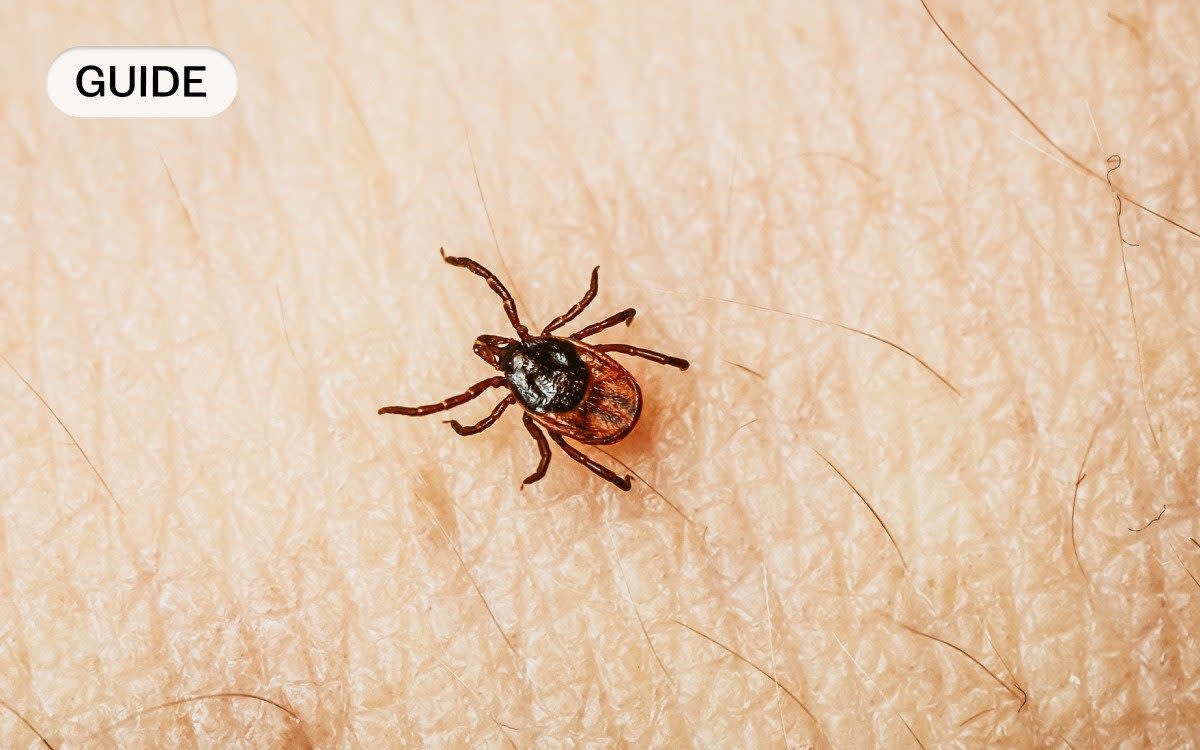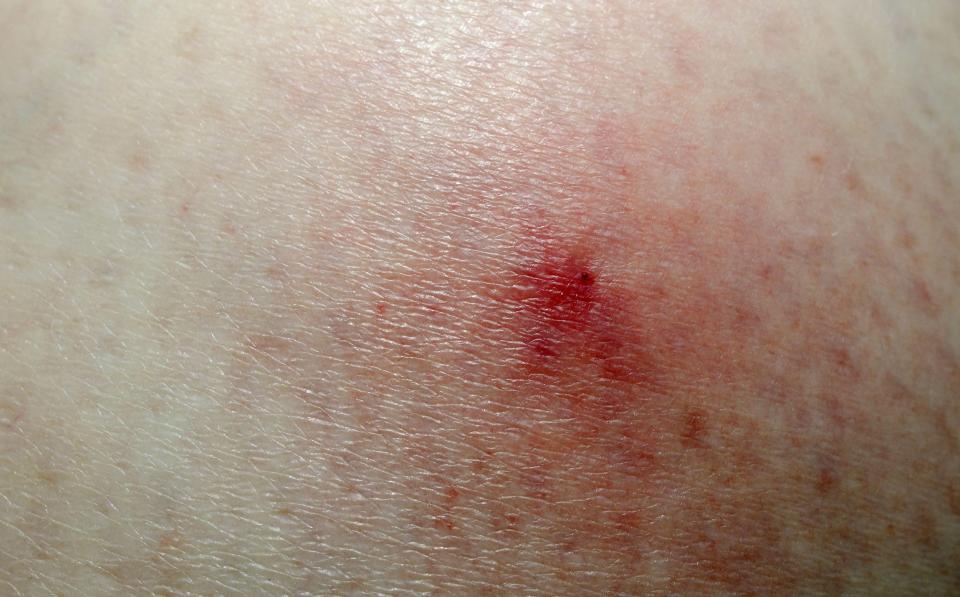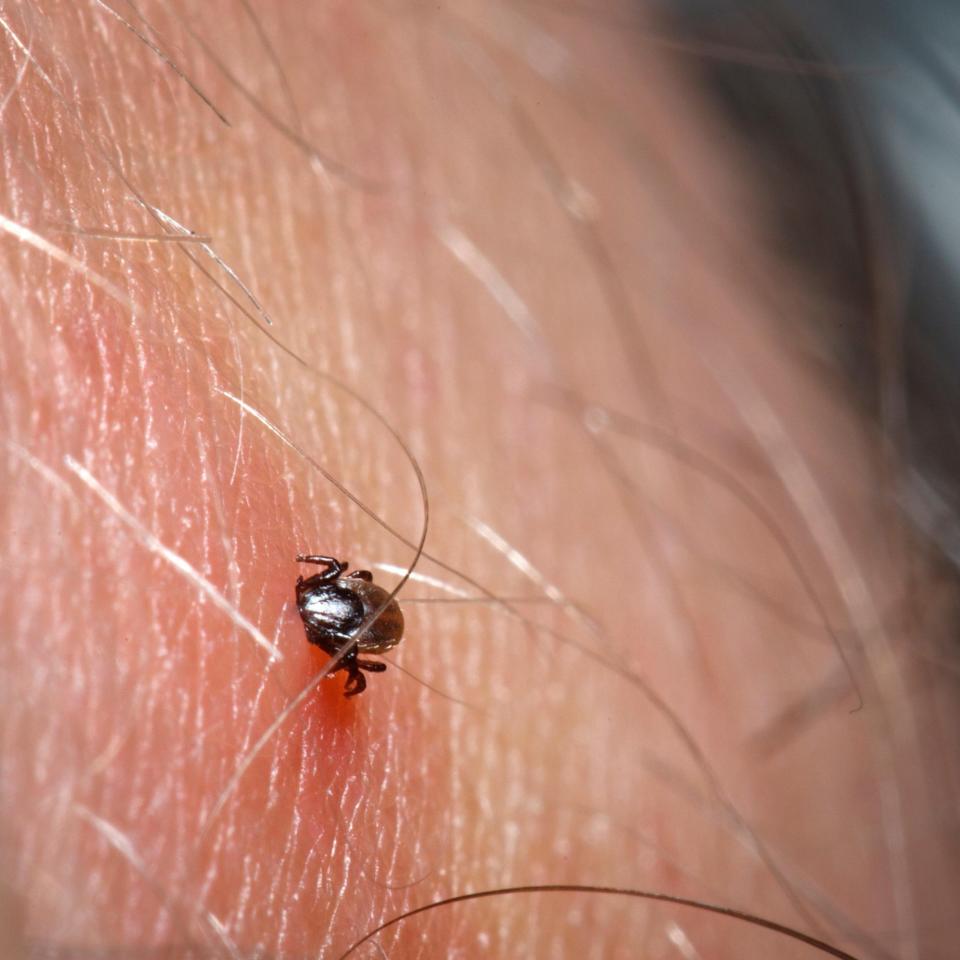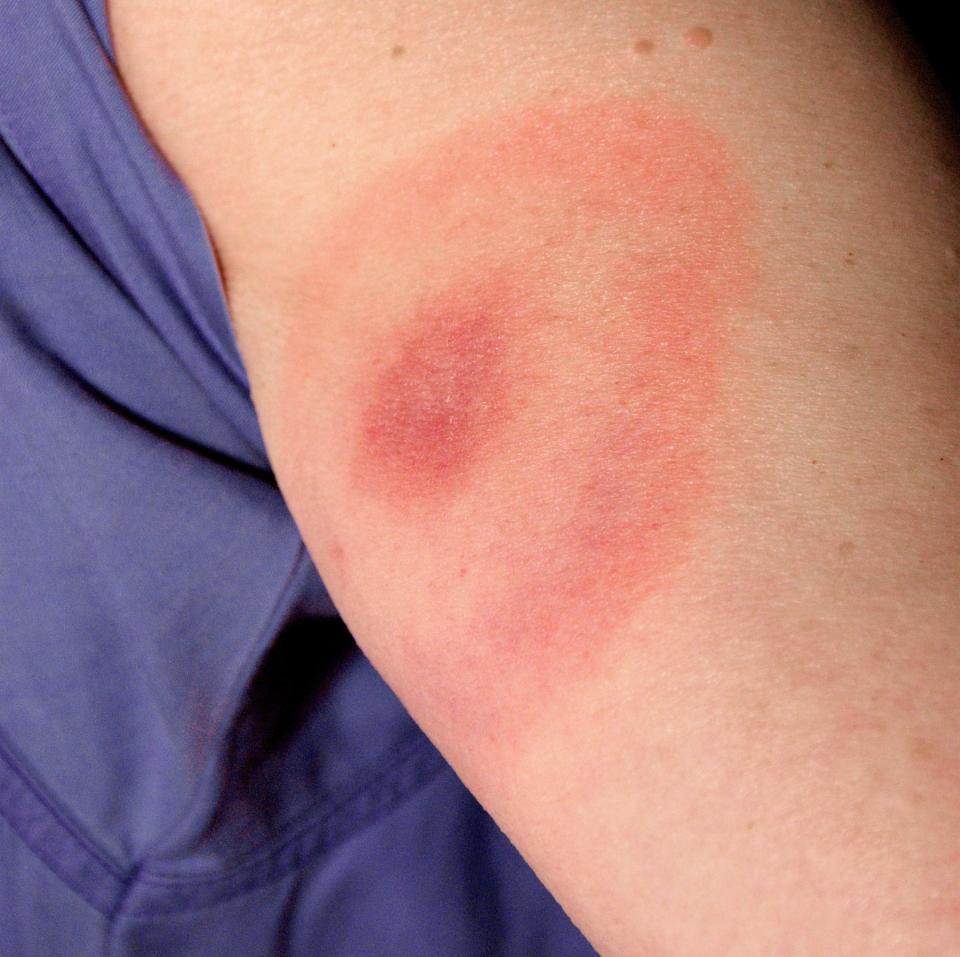What tick bites look like and how to deal with suspected Lyme disease

There’s something in the grass. If you have carelessly strayed bare-legged into woodland territory and found yourself with unwelcome travelling companions, then you will already be aware that we are in the thick of tick season.
Ticks are particularly common in grassy and wooded areas and are active all year around, however they are most prevalent between April and July.
These small spider-like creatures attach themselves to the skin and burrow their head in. They are a particular scourge for dog walkers, favouring both dog and human as hosts.
“They are usually 1mm to 1cm long and they don’t fly or jump but climb on to humans as they brush past,” explains George Sandhu, a deputy superintendent at Well Pharmacy.
Milder winters caused by climate change are thought to be making tick season start earlier and last longer, as well as making it possible for new species to survive in the UK. Animals also drive up tick numbers. Ground-foraging birds, as well as deer and rodents are all major hosts.
As they are not usually painful, you won’t realise you’ve been bitten straight away.
“They can bite you anywhere on your body, but they do prefer warm moist areas such as armpits, groin area, back of your knees and around your waist,” explains Niamh McMillan, Superdrug’s pharmacy superintendent.
Skip to:
What do tick bites look like?
They appear as a small red dot which is slightly raised and can cause the skin around the area of the bump to look reddish in appearance, says Dr Ross Perry, the medical director of Cosmedics skin clinics.

What do ticks look like?
They are spider-like arachnids, rather than insects, with eight legs and just a few millimetres in diameter. They vary in size from as small as a pinhead to as big as a pea, and are grey-brown in colour.
They won’t bite immediately, but will wander around until they find a place on their host to feed; often around the hairline, behind the ears or in folds of skin. Unless removed, a tick will fall off on its own once it is full.

Are tick bites itchy?
They are not normally itchy and don’t generally cause pain or discomfort. The classic rash of Lyme disease, known as erythema migrans, usually becomes visible from one to two weeks after a tick bite and tends not to be itchy. “However, some individuals do develop a reaction to tick bites, which develop and recede within 48 hours from the time of the tick bite. These are more likely to be associated with itchiness,” says Dr Sanjay Mehta, a GP at The London General Practice.
What is the best way to remove a tick?
Avoid using tweezers if possible. “Unless you know what you’re doing, only remove ticks using a special tick remover tool, available from pharmacists. Tweezers don’t work as well. You have to be careful taking a tick out as they can break, leaving parts still inside the body,” says Howard Carter, a bite prevention expert who oversees all incognito testing at the London School of Hygiene & Tropical Medicine.
Remove gently and hold it so that it is vertically above your skin. “The chance of contracting Lyme disease is far less if you successfully remove the tick without squashing its innards into your body,” he adds. If you don’t have a rick remover, then use clean tweezers.
If you see ticks on your skin, you don’t necessarily get transmission for up to four hours: “So if you can remove them that’s ideal,” says Dr Mehta.
How to treat a tick bite
First off the tick needs to be removed, as above.
If not possible, try to take a picture of the tick in case of having to see your GP as it will be easier for them to identify it and any possible risks. “Dispose of the tick and thoroughly wash hands afterwards with warm water and soap,” says Dr Perry.
You will also want to wash the bite with soap and water and rub an antiseptic cream into the area of the bite, says Carter.
When should I be worried about a tick bite?
Tick bites are usually harmless, however they can sometimes cause an allergic reaction or a more serious illness such as Lyme disease.
It’s best to visit your GP if you were unable to completely remove the tick and therefore it’s still under the skin and needs removing: “This can lead to possible disease and your skin may well become infected,” Dr Perry explains.
If you have managed to safely remove the tick and you get symptoms such as irritation, spreading of the rash it could possibly be a sign of Lyme disease so again visit your GP.
Only about 4 per cent of ticks carry the bacteria that cause the infection. And studies in Europe estimate that 1 per cent to 5 per cent of tick bites can lead to Lyme disease. Ticks can also spread the Babesia parasite, which causes disease by infecting red blood cells. It is very rare, however.
What are the signs and symptoms of Lyme disease?
A key sign of Lyme disease caused by an infected tick is a rash that looks like a bullseye. The rash can appear up to three months after being bitten by an infected tick and it can last for several weeks.

“Keep a close eye on symptoms for tick borne diseases in the first few weeks after the tick bite,” says McMillan.
These include:
Muscle or joint aches
Stiff neck
Headaches
Swollen lymph nodes
Other flu-like symptoms
Only a very small percentage of people actually end up with symptoms. Doctors can perform blood tests to help diagnose the disease, which is usually then treated successfully with a three-week course of antibiotics, unless the symptoms have been left too long.
How to prevent bites
To reduce the chance of being bitten, Sandhu advises covering your skin while walking outdoors and tucking your trousers into your socks.
“Wear light-coloured clothing so ticks are easier to see and brush off,” says Sandhu.
It is also sensible to stay on clear paths whenever possible and when you return home, make sure to check yourself as well as your dog.
“Remove any outer layers before you go indoors, and give them a good once-over. It’s better still if there are two of you to carry out an inspection duty on one another,” says Dr Sean McCormack, the head vet at Tails.com.
If you are alone then taking a shower can be a good idea, as they may fall off. Ticks can live on warm, moist clothes for two days, so washing them is a good idea.
What is the best tick repellent?
If you don’t want to cover up your legs and arms, then an insect repellant is advisable if you are spending time in foliage. “Use a PMD-based repellent such as Incognito. Always follow instructions and be sure to apply regularly,” advises Carter.
What to do if your dog has ticks
You can remove ticks in the same way on a dog as you would a human, however, most pet shops do sell tick removal devices which are often easier. “Again, you need to make sure the tick’s body is whole when removed and not left inside the dog. If you’re concerned this has happened then it’s vet to see the vet,” says Dr Perry.
“The golden rule here – the sooner the better. But also correctly. The less time a tick spends on your pet, the less time it has to pass on potentially nasty infections.”
You are more likely to feel a tick on your dog before you see it. “You could easily mistake them for a wart, a burn, a skin tag, or a speck of dirt. On closer inspection though, you’ll see they have eight tiny legs and a small dark head,” Dr McCormack notes.
It is important not to squeeze the tick at any point in the process, as this can increase the chance of infection. “This is why removing them with your fingers or regular household tweezers isn’t recommended,” says Dr McCormack.
How can I prevent my dog from getting ticks?
The first stop is keeping your garden at home in order. “If you live in a particularly tick-infested area, such as the countryside, homeowners should make mowing their garden their favourite job,” Dr McCormack explains.
Keeping your grass short and free of wild undergrowth will mean they have nowhere to hide and crawl onto your dog’s fur. “If you have any seating or play areas in your garden it would also be wise to keep them away from grassy vegetation that ticks could get onto,” says Dr McCormack.
If you do have to wade in for that favourite ball, check your clothing for ticks and brush them off quickly.
If you regularly walk in a high-risk tick area (grassy woodland), ask your vet about vaccinating your dog. “It gives added protection against Lyme disease on top of regular tick treatment for dogs,” advises McCormack. These vaccines are not safe to the standard used on humans.
What are the signs and symptoms of Lyme disease in a dog?
Lyme disease is only transmitted through the bite of infected ticks.
“The symptoms of Lyme disease in dogs include lameness, swollen lymph nodes, lethargy, fever, swollen or painful joints, and loss of appetite,” says Sarah Page-Jones, a lead veterinary expert for Pet Drugs Online.” If caught early it is fully treatable with antibiotics.

